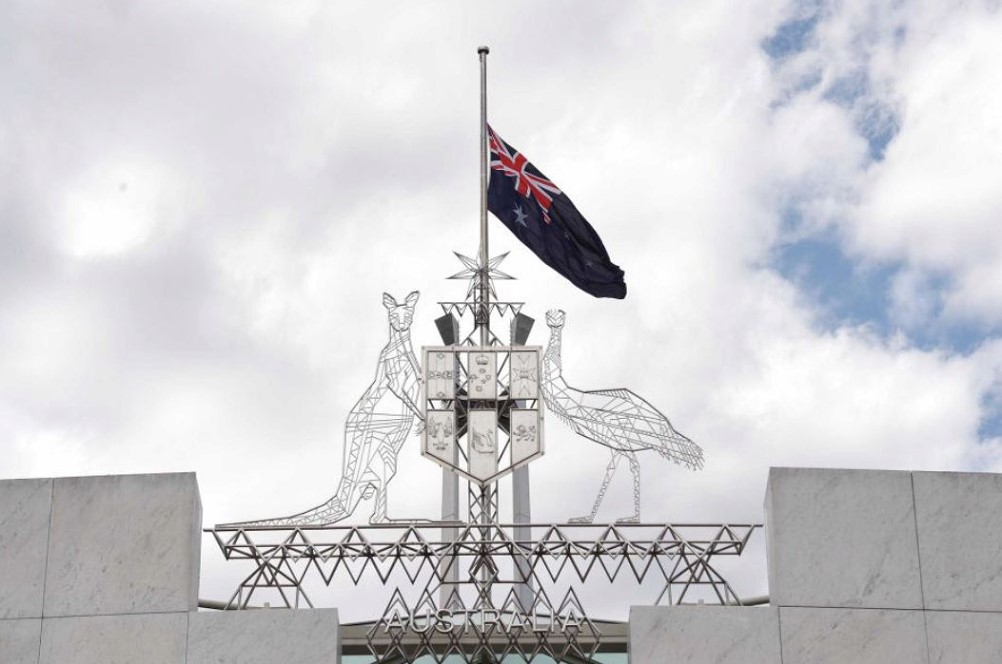Australian National Flag
Half-mast Parliament House
Canberra
Flying Flags at Half – mast


Australian National Flag
Half-mast row of flagpoles
Flags at Half-mast position
The tradition of flying flags or sails at Half-mast had its beginnings with the Royal Navy. It was the habit, after the restoration of the Monarchy in 1660, for ships of the Royal Navy to fly their flags at Half- mast on the execution of King Charles 1 (30th January 1649)’ and it is from this custom that, so far as we can determine, the present practice of announcing a death by flying a flag at Half-mast has evolved.
There are occasions when direction will be given by the Australian Government for all flags to be flown at half-mast position as a sign of mourning.
Half-mast means that the flag is flown two-thirds of the way up the flagpole, with at least the height of the flag between the top of the flag and the top of the flagpole. Flags cannot be flown at half-mast on poles that are more than 45 degrees from the vertical, but a mourning cravat can be used instead (see below).
The flag is half-masted by raising it to the top of the mast, then slowly lowering it to the half-mast position, which will depend on the size of the flag and the length of the flagpole.
The flag must be lowered to a position more than its own depth from the top of the flagpole to avoid the appearance of a flag that has accidentally fallen from the top of the flagpole. When the Australian National Flag is flown at half-mast, other flags should not be flown above it.
Under no -circumstances should a flag be flown at half-mast at night, whether or not the flag is illuminated.
Other flags on flagpoles or stands should also be at half-mast or should not be flown at all. Flags of foreign nations should not be flown unless their country is also observing mourning. The Flag should be raised again to the peak before lowering it for the day. When flying the Australian National Flag with other flags it should be raised first and lowered last.
Flags on government buildings should be flown at half-mast when directed by the Commonwealth Flag officer.
For government and public buildings, flags should be flown at half-mast during times of mourning for the following people and according to the following procedures.
Examples of these occasions are:
- On the death of the Sovereign (Queen or King) the flag should be flown from the time of announcement of the death up to and including the funeral. On the day the accession of the new Sovereign is proclaimed, it is customary to raise the flag to the top of the mast from 11 a.m. until the usual time for closure of business
- On the death of a member of the royal family – by special command of the Sovereign and/or by direction of the Australian Government
- On the death of the Governor-General or a former Governor-General
- On the death of a distinguished Australian citizen, in accordance with protocol
- On the death of the head of state of another country with which Australia has diplomatic relations – the flag would be flown at half-mast on the day of the funeral or as directed
- On days of national commemoration such as Anzac Day and Remembrance Day.
Flags in any locality may be flown at half-mast on the death of a local citizen or on the day, or part of the day, of their funeral.
An alternate mark of mourning, used when half-masting is unsuitable, is to add a black cravat or ribbon to the top of the flag, at the hoist.
Source: Australian Government Dept of Prime Minister and Cabinet

